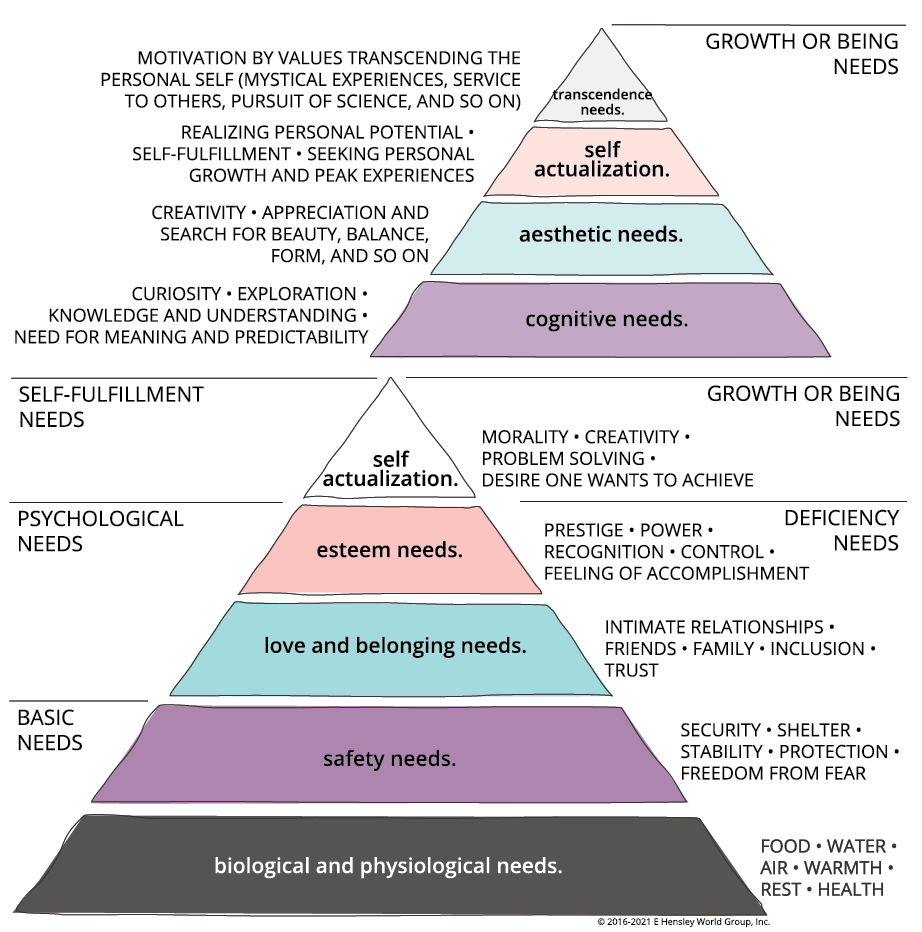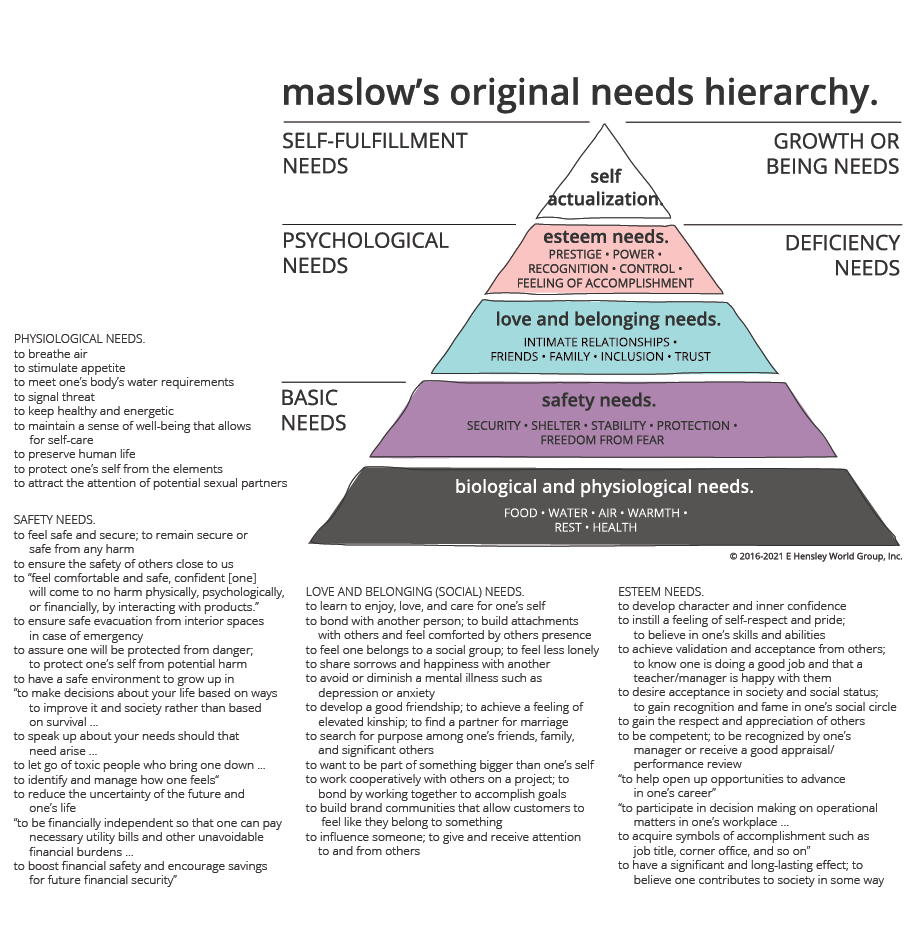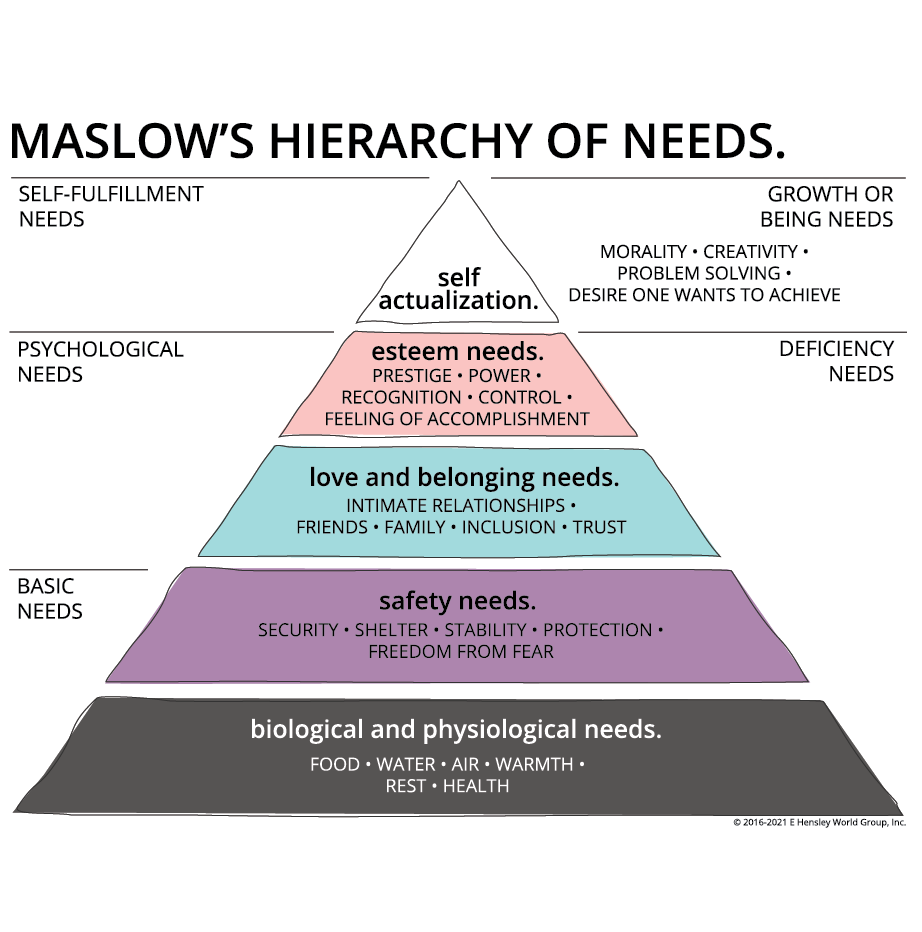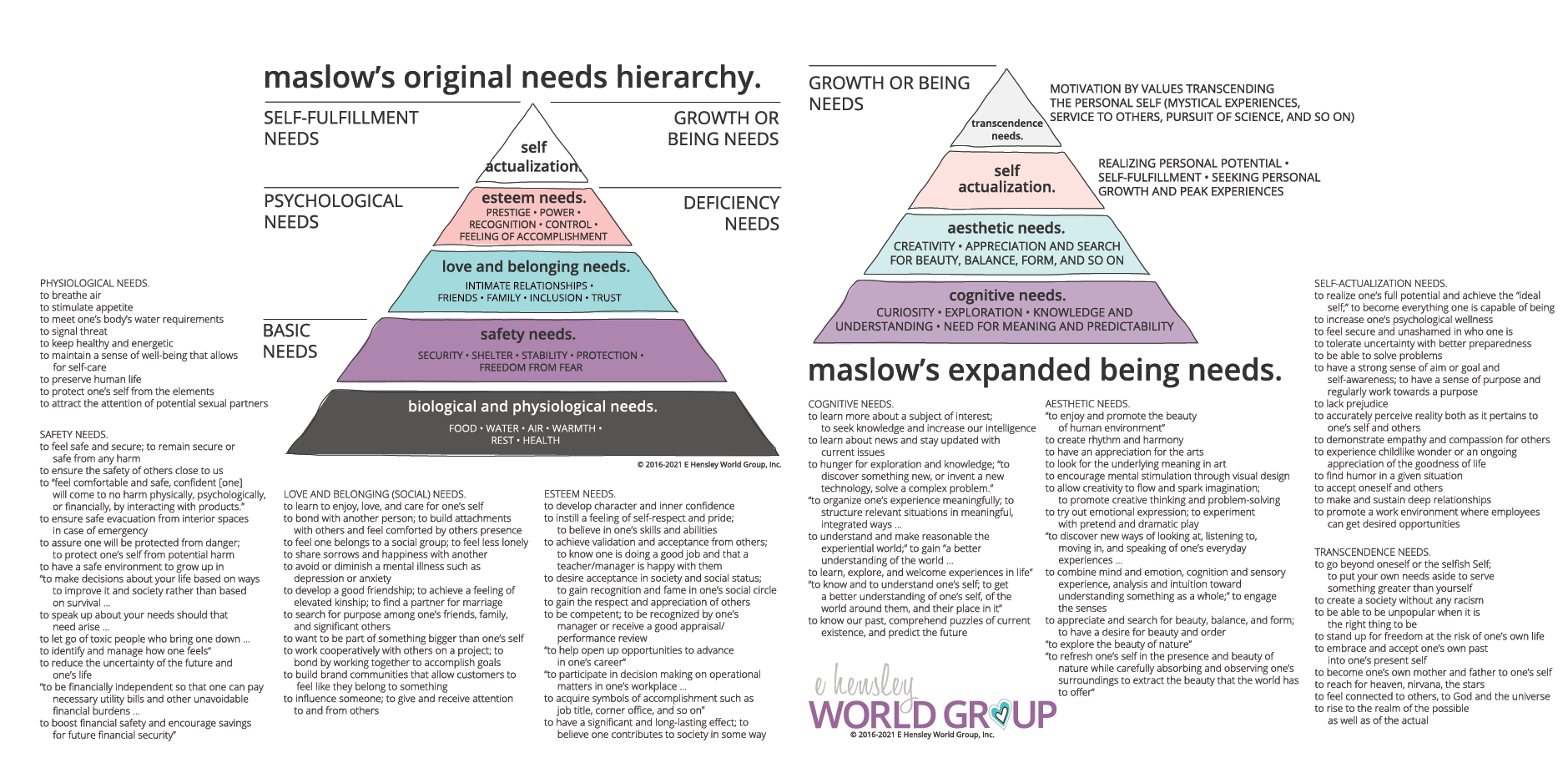appealing to human needs
Design thinking begins with a focus on a human-centered need, specifically a problem where that need isn’t being met.
Now, not all needs are created equal. According to Maslow’s hierarchy of needs, there are two types: deficiency needs and growth or being needs. (You’ll sometimes find these abbreviated without explanation as D-needs and B-needs, respectively.)
DEFICIENCY NEEDS (D-NEEDS).
Physiological needs, Safety needs, Love and Belongingness needs, and Esteem needs are all deficiency needs. These needs arise from scarcity, from not being filled. For example, when we’re struggling to put food on the table our physiological need might take precedence over an aesthetic need.
While one doesn’t need to have met all lower-level needs to focus on meeting higher-level needs, it does make it easier. In actuality, we cycle up and down through the needs depending on the realities of our lives. And for some, the higher-level needs always take precedence over other needs, think the starving artist troupe or activists who repeatedly put themselves in harm’s way or go on hunger strikes.
BEING NEEDS (B-NEEDS).
In Maslow’s original hierarchy, Self-Actualization needs were at the top of the pyramid and the only growth needs.
Maslow later expanded this hierarchy to include four levels of growth needs: Cognitive needs, Aesthetic needs, Self-Actualization, and Transcendence needs.
However, searching Maslow’s Hierarchy of Needs on the Internet yields more discussions of the original pyramid than his expanded one. (I’ve even noticed a few textbooks that only cover the original pyramid despite Maslow making additions/adjustments in the 1960s-1970s.) This means in-depth discussions or explanations of Cognitive or Aesthetic needs are harder to find than Self-Actualization needs or even Transcendence needs.
A NEEDS INVENTORY.
I’ve always been more interested in meeting Cognitive and Aesthetic needs than Safety needs, especially when it comes to selling products and services. So, I constantly find myself looking for an inventory of these needs for inspiration as I help clients craft vision and mission statements.
Rather than continue to search for these needs when I need a reference, I’ve created a list of needs examples for each level of Maslow’s hierarchy.
Note that this reference is not meant to be exhaustive. It’s just a jumping-off point for creativity and to get you thinking in terms of your ideal customer.
Want more content like this? Subscribe to receive Letters to Entrepreneurs. You’ll not only get a summary of what’s here, you’ll also have PDF worksheets designed for you to implement these ideas delivered straight to your inbox!





